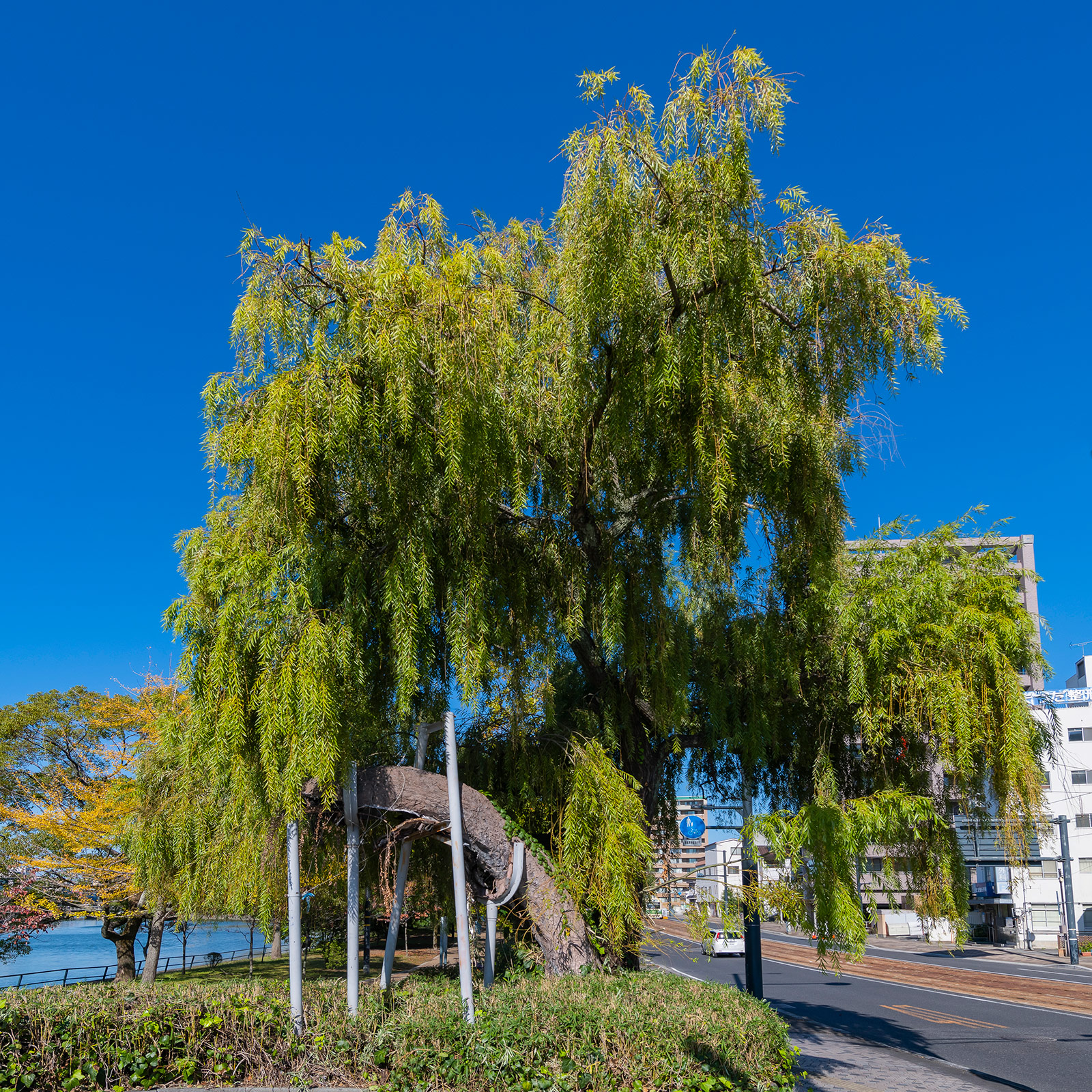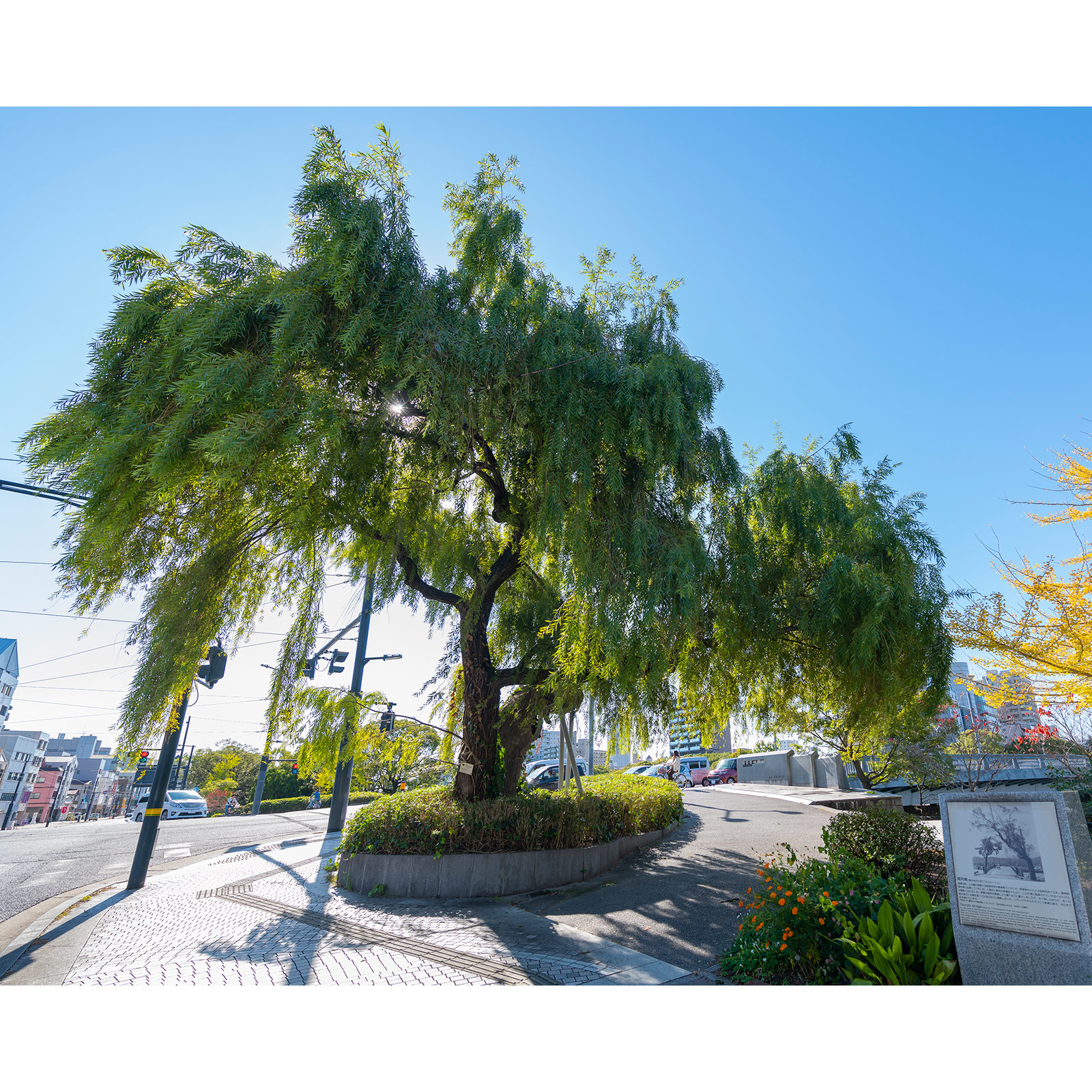1880年、京橋川に架けられた鶴見橋(つるみばし)は木の橋でした。原爆の熱線によって欄干が燃えはじめましたが、人々が懸命に消火して、爆心地から比治山へと避難することができました。橋のたもとにあったシダレヤナギは、枝や葉がすべて散り、黒焦げになりながらも、翌年、芽を吹き返しました。この木は、近くに住んでいた明治生まれの方が、自分が子どものころから、ここにあったと証言されています。鶴見橋は、原爆にも耐えた橋でしたが、台風によって傾き、新しい橋に架け替えることになりました。まず、シダレヤナギを守るために、根回しをして移植する作業が行われ、1990年の橋の完成と同時に、現在の場所に植え替えられました。その後は順調に育っていましたが、もとの幹は枯れてしまい、根元から芽吹いたヒコバエが成長して、世代交代が行われました。
In 1880, Tsurumi-bashi Bridge spanned the Kyōbashi-gawa River as a wooden bridge. In the intense heat of the bombing, the parapet began to burn; however, thanks to the efforts of the community, the fire was extinguished, and victims could cross the bridge to flee to Hijiyama from the hypocenter. While the weeping willow at the foot of the bridge was blackened by flame and lost all of its branches and leaves, new buds grew the following year. A citizen born in the Meiji Era (1868-1912) recognized this tree as being there since they were a child. The Tsurumi-bashi Bridge managed to survive the bombing, but as it began to lean after a typhoon, the decision was made to build a new one. To protect the willow tree, they first dug around the roots of the tree to replant it in its current location when the new bridge was finished in 1990. The tree thrived for a time, however, the original trunk eventually withered. From the roots, new buds began to grow, becoming a new tree which carries on the legacy of the old.


